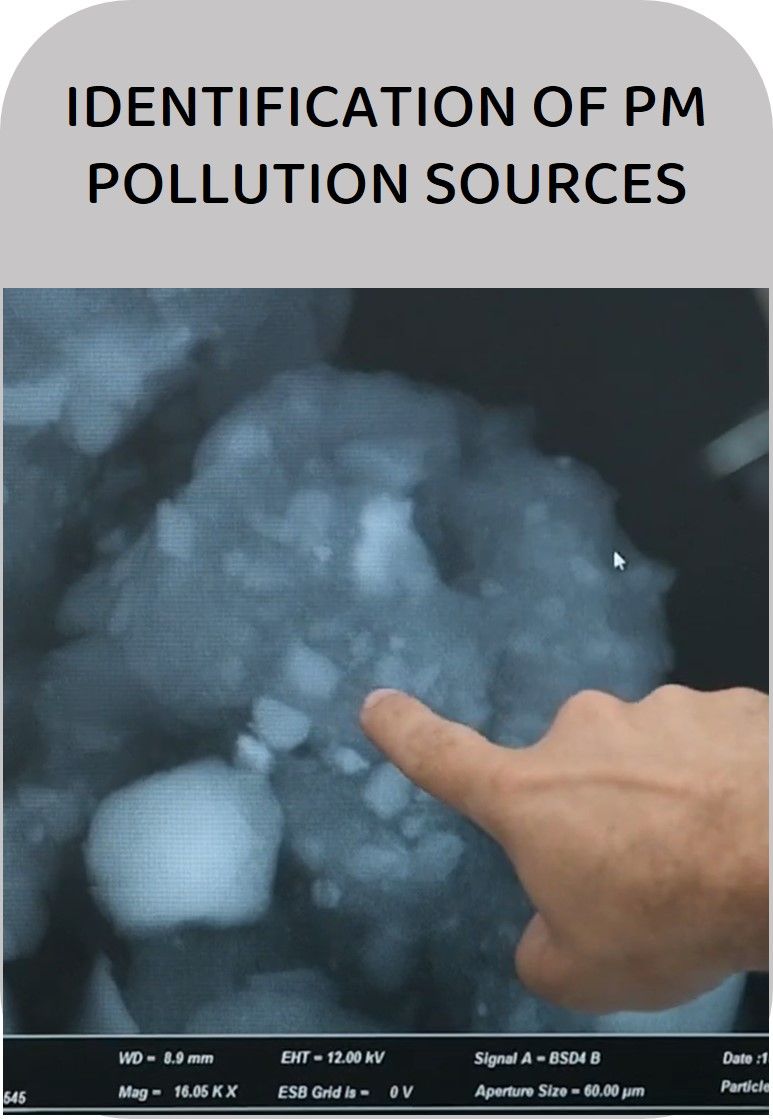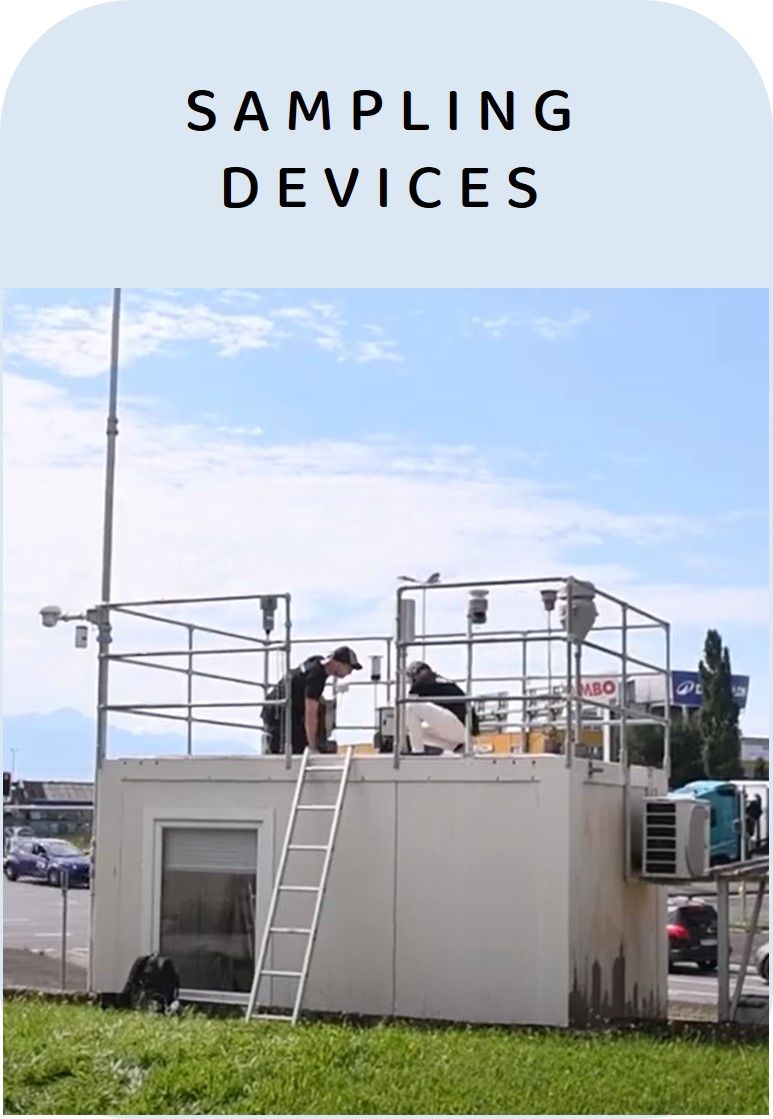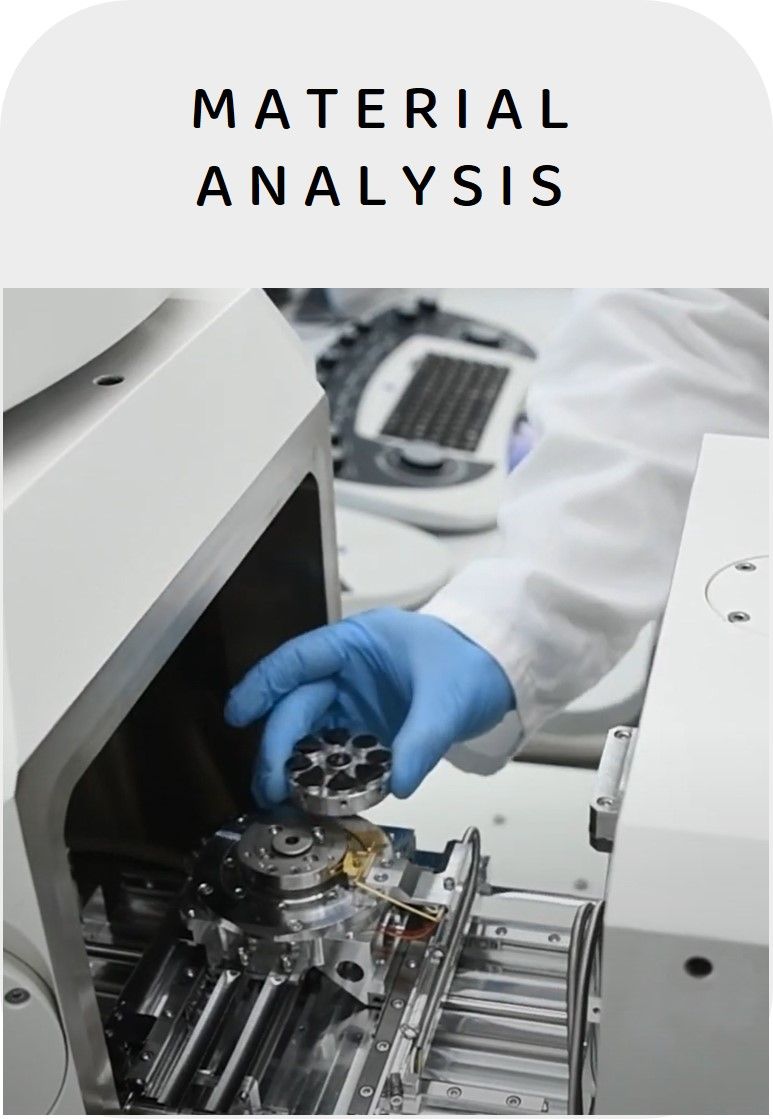UNDERSTANDING THE
INVISIBLE
TO IMPROVE AIR QUALITY
We investigate the causes of air pollution for policymakers, researchers, and companies, enabling them to take informed and targeted measures.
At Particle Vision, we go beyond detection by differentiating, classifying and quantifying the sources of pollution with scientific precision. Our proprietary ASPA MC2® solution combines automated morpho-chemical analysis with machine learning to deliver defensible, source-specific insights.
Using advanced particle characterization techniques, we analyze PM80, PM10, PM2.5 and TSP to identify the exact origin of emissions. This includes non-exhaust particles from road and rail traffic (brake, tire and road wear), as well as dust from quarries, mines, gravel pits, construction, industry and natural processes.
With thousands of particles characterized per sample and a robust reference library, ASPA MC2® enables reliable source apportionment in complex environments and provides actionable evidence for mitigation, permitting and conflict resolution.
SOLUTIONS BY SECTOR
Particle Vision supports public authorities with high-resolution, source-specific analysis of airborne particles. Our services help clarify the origins of particulate pollution (PM80, PM10, PM2.5), enabling informed decisions in complex or sensitive contexts. Whether for compliance verification, conflict mitigation, or targeted emission reduction, we deliver actionable insights grounded in advanced morpho-chemical particle analysis, automated classification, and machine learning. Trusted by environmental agencies across Switzerland and beyond.
Traffic is a major contributor to particulate emissions—yet traditional monitoring struggles to distinguish its specific sources, especially when it comes to non-exhaust emissions (NEE). We offer advanced characterization of particles from tire and brake wear, asphalt abrasion, and road dust resuspension. Our source-specific insights enable cities and regulators to assess real-world contributions of traffic-related emissions, evaluate mitigation measures, and support evidence-based urban air quality planning.
Get to know more...
Attribution through detailed morpho-chemical analysis of airborne dust and fingerprinting of operation-specific emissions. We attribute and quantify the influence of specific industrial activities in measured airborne dust. Our data helps operators and regulators understand emission patterns, ensure compliance, reduce community conflicts, and design targeted dust mitigation strategies—based on real-world, site-specific measurements.
Get to know more...
We support engineering and environmental consultancies with high-resolution data on particulate matter composition and sources. Whether for impact assessments, permitting support, or design of mitigation strategies, our analyses provide robust, source-specific evidence. With our expertise in particle forensics, we help turn complex air quality challenges into clear, actionable insights—backed by science and adapted to real-world settings.
Get to know more...
We provide Startups, SMEs, industry players, and academic institutions with straightforward, results-driven material analyses using our state-of-the-art Scanning Electron Microscope (SEM/EDX), located in the heart of Fribourg.
KEY BENEFITS
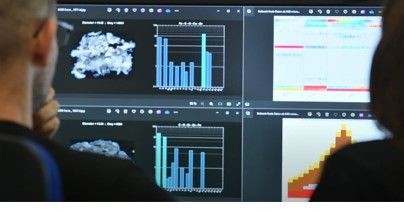
Reliable
We deliver scientifically robust, traceable results you can trust—based on nearly a decade of peer-reviewed research and proven field applications.

Precise
Automated high-resolution characterization of thousands of particles enables source attribution and confident decision-making.
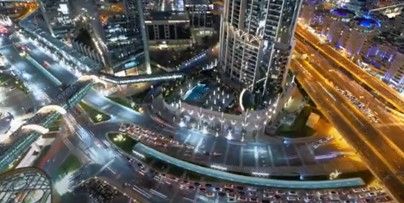
Fast
From sampling to actionable results in just a few weeks—thanks to our streamlined, automated analysis workflows.

Cost-effective
We go beyond standard methods to deliver meaningful results for particle pollution challenges, while minimizing unnecessary costs
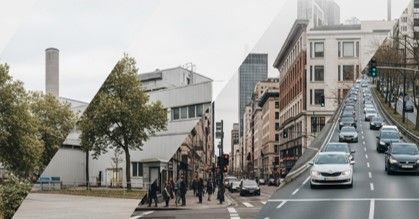
Flexible
Our modular approach adapts to your specific needs and can be seamlessly implemented in different settings.
SOLUTIONS, BACKED BY EXTENSIVE RESEARCH
Read the latest research publications and peer-reviewed articles, written by or with contributions of our expert team-members
-
Review article on techniques to quantify tire wear particles (TWP/TRWP). This study was performed in collaboration with a team of scientists form Norway, Germany, Sweden and Australia (2023): "Analytical challenges and possibilities for the quantification of tire-road wear particles"
-
Scientific article on the quantification of non-exhaust particles along roads. The study was performed in collaboration with scientists of the university of Mississippi (2022): "On airborne tire wear particles along roads with different traffic characteristics using passive sampling and optical microscopy, single particle SEM/EDX, and µ-ATR-FTIR analyses"
-
Scientific article in collaboration with the VTI (Swedish National Road and Transport Research Institute) and scientists of the university of Chalmers (Sweden) on the characterization and quantification of non-exhaust particles in a road environment in Sweden (2022): "Concentrations of tire wear microplastics and other traffic-derived non-exhaust particles in the road environment"
CLIENT TESTIMONIALS
Hanspeter Lötscher, ANU Graubünden (CH)
The Office for Nature and Environment (ANU) Graubünden has been working successfully with Particle Vision on several projects since 2014. In addition to the chemical and morphological composition of coarse and fine dust, as well as microparticles, the source contributions of dust particles could also be quantitatively determined thanks to the knowledge and technical equipment of Particle Vision. This has made it possible for the ANU Graubünden to verify the implementation of various measures in wood-burning and industrial activities. But also, in the case of dust disturbances the ANU Graubünden has been supported by Particle Vision, and it was possible to determine the sources of the dust pollution and their contributions to the dust. We can unreservedly recommend the cooperation with Particle Vision.
Richard Ballaman, Head of the Air Quality Section at the Federal Office for the Environment FOEN (CH)
We greatly appreciated the ability of the Particle Vision team to develop analytical and statistical methods that allowed us to better characterize fine dusts, their components and their origins. These methods will also be very useful in the future for analysing dust resulting from the abrasion of various metallic or mineral materials.
Dr. Adeline Niquille - Head of Section, Air Protection, Canton of Vaud (CH)
State-of-the-art expertise, precious advice and passionate scientific discussions. Very professional and pleasant collaboration.
CUSTOMERS AND PARTNERS

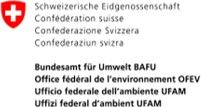
















CONTACT US
Have questions about how we can help you? Get in touch with us.
Call: +41 76 513 70 30
E-Mail:
or fill our form and we will get in touch with you:

